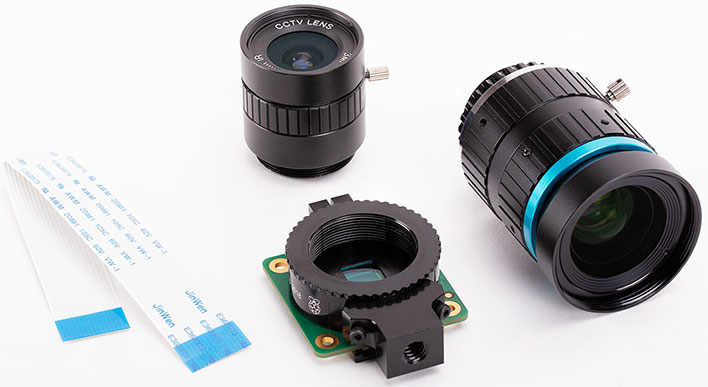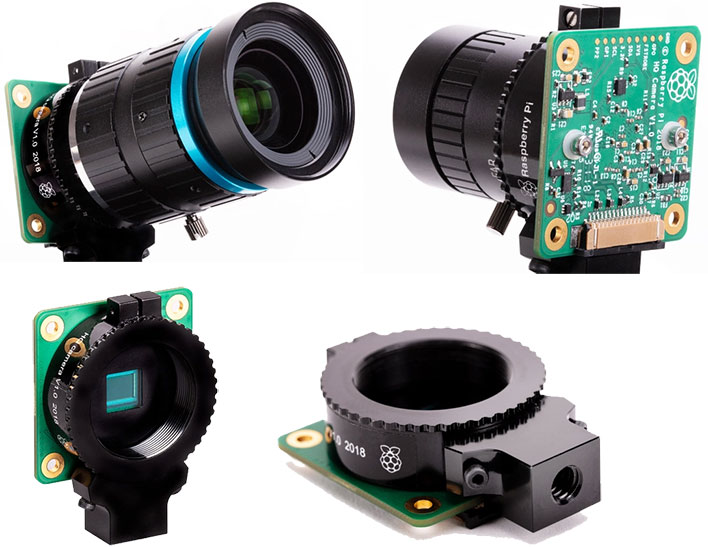Raspberry Pi Launches 12MP Interchangeable Lens Camera For Just $50
There are a million and one potential projects for the Raspberry Pi (like retro gaming), the affordable little PC that fits in the palm of your hand. One of them is to make your own digital camera. If that is the goal, you may want to look into the new 'Raspberry Pi High Quality Camera' accessory, which works with every Raspberry Pi dating back to the original Raspberry Pi 1 Model B.
The tiny add-on consists of a 12.3-megapixel Sony IMX477 camera sensor. It has a 1.55μm × 1.55μm pixel size (double the pixel area of the IMX219), a back illuminate sensor architecture, and an integrated back-focus adjustment ring and tripod mount. It runs $50 at the usual Raspberry Pi retailers, such as Cana Kit and PiShop.us.
In addition to the camera sensor, you need an actual lens as well. The Raspberry Pi High Quality Camera boasts support for off-the-shelf C-mount and CS-mount lenses, which will work out of the box. In addition, there is a wealth of third-party adapters available for various lens sensors to use them with a CS-mount, so virtually any lens that meets the back-focus requirement should work (with an adapter), the company points out in its FAQ.
"We expect that over time people will use quite a wide variety of lenses, but for starters our Approved Resellers will be offering a couple of options: a 6mm CS‑mount lens at $25, and a very shiny 16mm C-mount lens priced at $50," The Raspberry Pi Foundation says.
Those prices make it a costlier proposition than the Camera Module V2, which sells for $29.95 on Cana Kit. The Raspberry Pi High Quality Camera is not meant to replace the Camera Module V2, which is still available (both the regular and infrared versions), and instead "provides a different trade off between price, performance, and size."
One of main advantages of the Raspberry Pi High Quality Camera is a shift away from a fixed-focus module, as found on smartphone cameras. Fixed-focus modules can struggle with low light performance (though some more recent smartphones have made great strides in this area), and there is no option to replace the lens assembly with a higher quality one. These are things the new camera is meant to address.



